Fungi: An Unexpected Guide to Amazon Rainforest Conservation
Written by Office of Sustainability intern, Una Wilson (’24)
Una is a biology major specializing in studies of fungi, and a journalism and environmental studies minor, spent the summer in Peru alongside Wake Forest faculty researchers and CINCIA. Wilson shares her experience in Peru, and documents her research focused on mycorrhizal fungi in recently mined soils of the Amazon Rainforest.
The dense, teeming, biodiverse life within the Peruvian Amazon Rainforest creates an environment of intense natural selection. Towering trees shade out smaller shrubs, monkeys push one another off fruit-bearing branches, and tropical birds flit quickly from one riverbank to another to avoid the jaws of a sunbathing jaguar. Yet, amongst such fierce competition, the individuals of the jungle are more interconnected than they might seem and are all under attack by one common enemy.
Gold mining.
Drive three hours north of the Madre de Dios River and the biodiverse utopia careens off into an apocalyptic wasteland. In the gold mining region of Huepetuhe, Peru, the only visible wildlife are a few stray dogs, picking at trash. Toyota trucks drive across the sandy, washed-out soils, carrying miners, equipment, and barrels of granulated gold. Gravel excavated from deep below the forest floor piles into mountains.
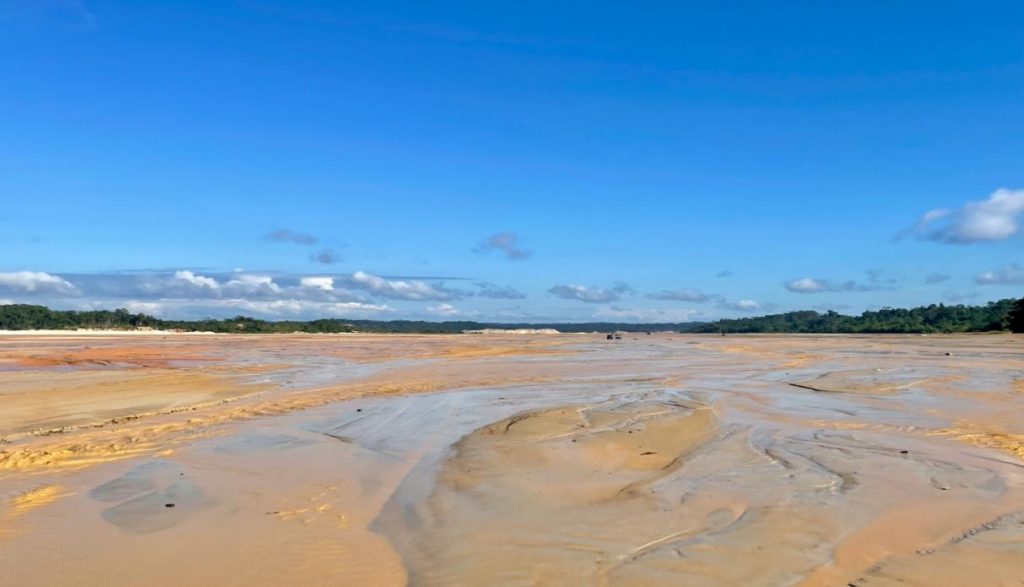
Gold mining is responsible for the desecration of hundreds of square miles of Peruvian Amazon Rainforest. Clear-cutting trees and excavating into the earth causes erosion and irreversible soil degradation. Roughly 115,000 hectares have been deforested in Madre de Dios, according to Cesar Ascorra from the Amazon Scientific Innovation Center (CINCIA). Habitats fracture under the pressure of deforestation, forcing native animal and plant species to either migrate or face extinction. Furthermore, massive carbon- sequestering forests like the Amazon are crucial to slowing climate change. Loss of trees and biodiversity in the Amazon rainforest doesn’t just affect its local residents—it affects the entire world.
Roosevelt Garcia-Villacorta, the leader of the Amazon Reforestation project at CINCIA, stood beside me at the precipice of the Huepetuhe mining deposit, observing the grim landscape.
“The only reason this entire rainforest isn’t destroyed is because miners don’t find gold everywhere,” Garcia-Villacorta said. “The government doesn’t try to protect the rainforest any more than people living in Madre de Dios (Peru) do, or people anywhere in the world. We are rapidly losing something so precious, so important to all life on earth, and we fail to see how extremely reliant we are upon this rainforest to sustain us.”
For generations, Amazonia has been a reliable carbon sink, meaning it naturally absorbs high levels of carbon dioxide from the air and plays an important role in keeping global climatic conditions stable. Over the last 50 years, anthropogenic, or man-made, deforestation has eliminated roughly 17% of the Amazon, resulting in a devastating imbalance of carbon absorption and release, according to MAAP data in 2020.
It is now estimated that the Brazilian Amazon – which is roughly a quarter of the size of the continental United States — emits more carbon dioxide into the atmosphere than it absorbs, according to an article published by the science journal Nature in 2021.
“This rainforest, it’s more than just stressed. We (humans) have completely altered the entire hydrological cycles of the Amazon region, of the planet. If you look at satellite imagery of the deforestation, you don’t see just little pockets of mining; the area of this destruction is massive and has transformed the ecology of the whole rainforest—which in turn has capsized the environmental balance of our whole planet.”
– Luis Fernandez, Executive Director at CINCIA
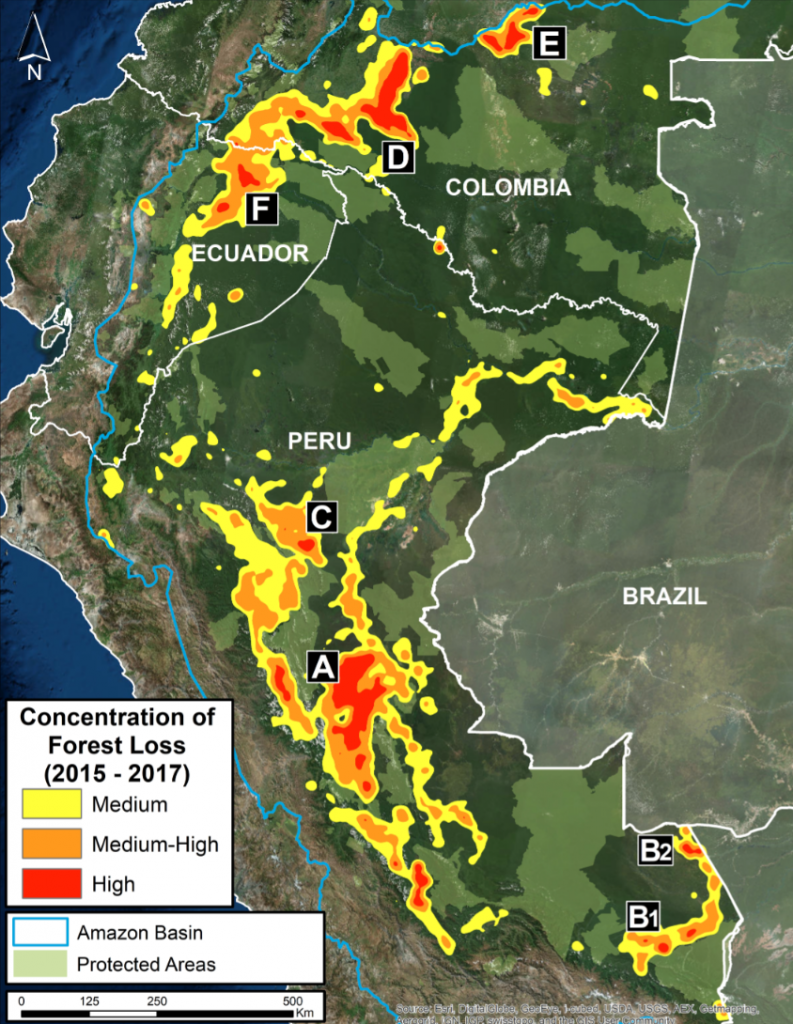
According to Fernandez, gold mining causes a ripple effect of stress that reaches far into the rainforest—not just the edges close to excavation.
“You look at the rainforest as a whole and you might think that the deforestation is contained in that one little area, but it’s not. Mass- destruction like that affects the whole forest, all of the animals and indigenous people living there; everything. It’s all connected, and it’s all in danger.” Fernandez said.
The Wood Wide Web
Just as how the entire Amazon feels the impact of one mined region, individual trees in a forest are also interconnected to one another. You probably learned in your middle school science class that trees of different species compete with one another for resources like sunlight, water, and nutrients from the soil. Natural selection dictates that only the most successful, fittest trees survive, right?
Wrong. Studies done by Suzanne Simard from the University of British Columbia have shown that individual trees of completely different species actually share resources with one another, going against the ages-old theory of natural selection. Beneath the forest floor, trees send nutrients and chemical signals to one another through their roots, participating in one immense Wood Wide Web of information exchange.
But they can’t do it alone. Trees need the help of another player to connect to one another and participate in the chemical conversation.
This organism is the fungus.
Mycorrhizal fungi are microscopic tubes of filamentous fungi that connect trees through their roots and allow them to communicate with one another by sending nutrients back and forth through the tubes, like neural pathways in your brain. This fungal freeway system has the capability to span an entire forest, connecting trees that are tens, or even hundreds of miles apart.
Imagine the forest is a beating heart; fungi are veins, and roots are arteries.
In Amazonian rainforests, fungal networks are especially important to sustaining forest ecosystem life. According to a research study by P.M. Vitousek and R.L. Sanford, Jr. at the Stanford University Department of Biological Sciences, frequent, heavy rainfall washes nutrients out of the top layer of soils in the region. Plants are therefore forced to burrow deep into the earth and rely heavily on their mycorrhizal associations to sustain themselves
In the Pantiacolla mountains, a foothill of the Andes Mountains in Southeastern Peru, soil root mats are especially dense. Wake Forest University Biology Professor Dr. Miles Silman hiked with me to the top of the Itahuania Mirador mountain in Pantiacolla. Halfway to the peak, he paused, reached down, and scraped away the thin layer of sandy topsoil. An earthen labyrinth of roots and fungi penetrated at least a foot down into the earth.
“Trees and other rainforest plants are especially reliant on their fungi networks to supply them with enough carbon— that’s science-speak for ‘food’—and minerals.” Silman said. “These soils are alive; they are living, breathing, and productive. The trees towering above us would not be taller than a tulip without the mycorrhizal fungal root network beneath them.”
“The fungi have something the trees need, and the trees have something the fungi need. It’s a symbiotic partnership; not just between trees and fungi, but between all plants within the forest.”
– Dr. Miles Silman, Wake Forest University Biology Professor
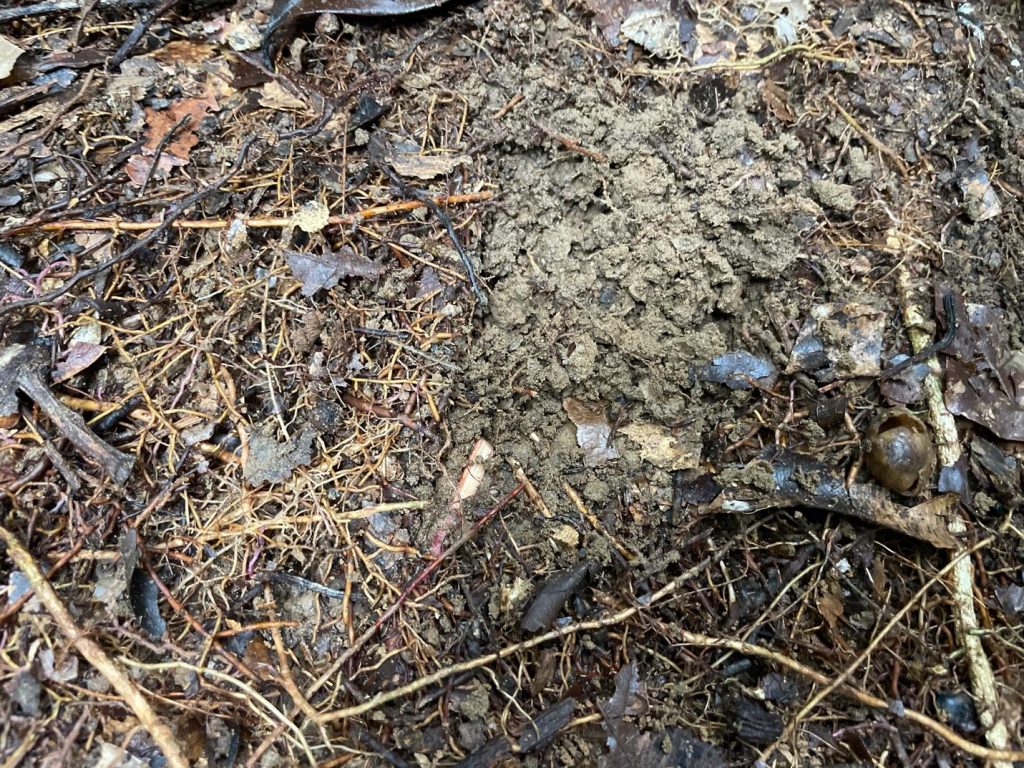
A Fragmented Network
Mycorrhizal networks can serve as an accurate metaphor for the intense geopolitical conflict occurring between people and land in Amazonia. Similarly, to how all trees in forests share resources with one another, there are countless groups of people who live in and around the Amazon and are dependent on its wellbeing to flourish.
Over 200 indigenous groups dwell within the rainforest. Jaime Corisepa is the Indigenous leader of the Harakmbut Puerto Azul community in the Peruvian Selva Sur of Madre de Dios and is an outspoken advocate for many native groups in the Peruvian Amazon.
“The land that we have been protecting and maintaining for thousands of years is now being taken away and destroyed against our will,” Corisepa said in a recent interview. “Indigenous communities have always protected the interest of everyone, even people of different communities; we maintain the forest for the good of everybody.”
Despite having maintained the rainforests for centuries, indigenous leaders have only been included in United Nations climate summits, known as a Conference of the Parties, or COP, very recently. Corisepa, along with many other leaders, are concerned about their relative absence at the table.
“Indigenous people must be included in global conversations on conservation of the forest,” he said. “We are all living on the same planet, and we are all one people, one human race. Thinking we are all separate is an illusion.”
Miners and farmers, too, rely upon the rainforest for economic prosperity. The Peruvian International Institute of Science and Innovation estimates that GDP from mining in Peru increased roughly a $27 million in 2021 alone.
All those mining and agriculture exports from the deforested rainforest must go somewhere. Peru’s main export partners are China (34 % of total exports) and the United States (11%). Despite numerous environmental organizations fighting for the preservation of the rainforest, developed companies continue to support markets that rely on Amazonian deforestation.
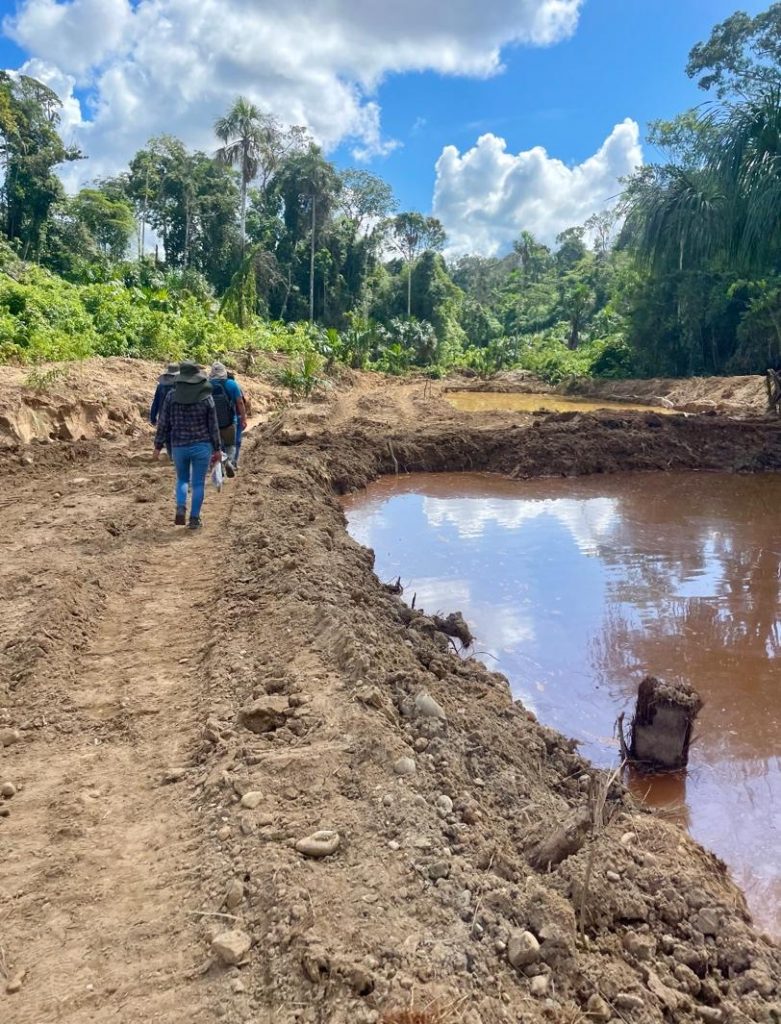
Our global fungal network is fragmented.
“Humans have reached an impasse of misunderstanding.” said Corisepa. “We are one people, one human race. Yet we don’t see-eye to-eye with politicians, with miners, with environmentalists, with scientists. We just argue and cast aside. How are we supposed to progress without talking to each other?”
Healing the Network
Just as forests cannot prosper without all trees working together to deliver the ecosystems services on which the planet relies during this climate crisis, human communities cannot mend our disconnected relationship with nature without communication.
“For thousands of years, humans have developed the science to understand natural processes,” Fernandez said. “We have known how to conserve and protect nature; we have known how important it is to our survival as a species. What’s missing now?”
Perhaps, we could look to the forest fungi as a guide.
According to Simard from the University of British Colombia, when a tree is dying, it sends its remaining carbon resources through the fungal network so that other trees prosper in its wake. When environmental conditions change, such as a forest fire erupting, trees send chemical signals to all surrounding trees to alert them of the danger. Once the signal is received, trees might draw up more water from the earth or soften their bark to prepare for the fire, Simard’s research illustrated.
In a sense, trees in a forest are acting with altruism. Through their symbiotic relationship with the fungi, trees work together to preserve the integrity of the forest.
The trees are speaking to each other, but most importantly, they are listening.
“Communication and education; those are going to be our best strategies in slowing climate change and saving nature,” said Marta Torres, Director of Scientific Communications at CINCIA. “I am an environmental educator, but I am also a listener. I always give eye-contact- no matter who I am talking to, to show respect. This is how you come to understand people, and this is how you help people understand each other.”
Stationed in Puerto Maldonado, Peru, CINCIA is an organization whose mission is to understand the science of the changing aspects of Amazonia, communicate these changes to citizens, politicians, indigenous people, and miners alike, and use their knowledge to heal the rainforest and protect public health.
As a part of their science communication initiative, CINCIA has launched education programs about mercury contaminants in water and fish for local communities in Madre de Dios. Many illegal gold mining operations along the river use mercury to amalgamate excavated into gold to larger pieces. CINCIA has printed pamphlets about the negative environmental and public health impacts of mercury-intensive gold mining in Spanish, English, Quichua, and many indigenous languages as well.
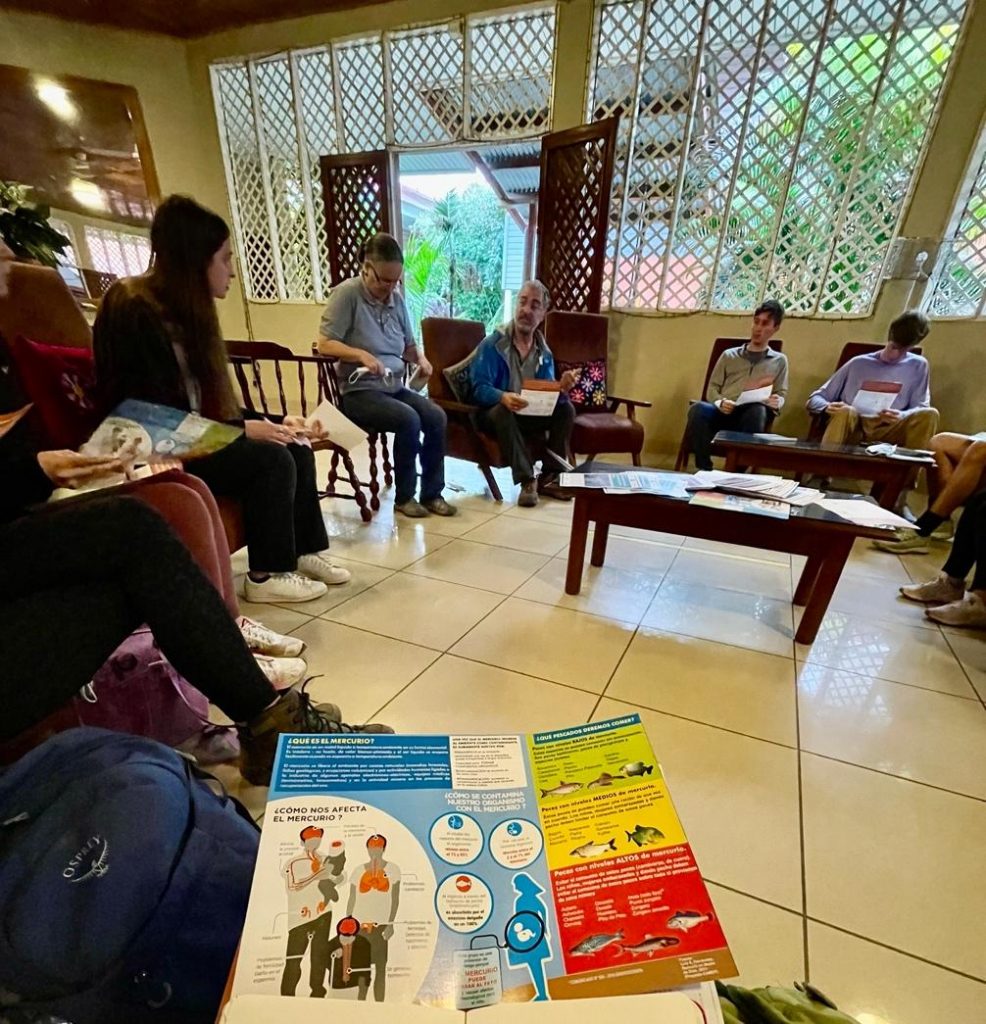
“You have to be able to talk to people– show the politicians what the indigenous people think, and show the indigenous people what the miners think, and then educate the general public with all those perspectives combined,” said Carol Mitchell, Deputy Director at CINCIA. “Here at CINCIA, we realize how important it is to communicate the science of what we’re doing to the general public. Why would someone want to protect a rainforest they know nothing about?”
In other words, proper scientific communication is the glue that could repair the disrupted fungal network of people reliant upon the Amazon. As the scientists and educators at CINCIA emphasized, the villains in the intense geopolitical battle over the rainforest are not found amongst the people living there. The miners, scientists, indigenous people, citizens, farmers, and environmentalists are all just entities with differing motivations being dictated by corrupt politicians. They are the trees, disconnected from each other in our great human fungal network.
“I believe there is hope for the future– I really do. We simply must devote ourselves to educating people and letting others educate us as well,” said Garcia-Villacorta, walking with me away from the mined wastelands of Huepetuhe.
“Maybe if we stop to listen to nature, to the rainforest; if we begin to speak and share our knowledge with one another, the rainforest will prevail.”
Roosevelt Garcia-Villacorta, leader of CINCIA’s Amazon Reforestation project
Reporting Index
- Interview with Dr. Miles Silman, May 29
- Interview with Cesar Ascorra, June 10
- Interview with Carol Mitchell, June 10
- Interview with Jaime Corisepa, June 12
- Interview with Luis Fernandez, June 12
- [NAME OF PAPER] by P.M. Vitousek and R.L. Sanford, Jr. at the Stanford University Department of Biological Sciences
- Data collected from Independent Research Project on Mycorrhizal Fungi
- Interview with Roosevelt Garcia-Villacorta, June 20
- NPR interview with Suzanne Simard, “Trees Talk To Each Other. ‘Mother Tree’ Ecologist Hears Lessons For People, Too”
- Visit to Señor Redy’s gold mining concession, June 20
- Visit to Señor Marcus’s gold mining concession, June 20
- Peru GDP from mining, tradingeconomics.com
- MAAP Synthesis #3: Deforestation in the Andean Amazon (trends, hotspots, drivers)
- “Gold Mining in the Peruvian Amazon: Global Prices, Deforestation, and Mercury Imports”-scientific article by Jennifer J. Swenson, Catherine E. Carter, Jean-Christophe Domec, Cesar I. Delgado, published April 19, 2011
- Economics information from Peru National Institute of Statistics and Information
- “Amazonia as a carbon source linked to deforestation and climate change”-scientific article by published by nature.com July 14, 2021

